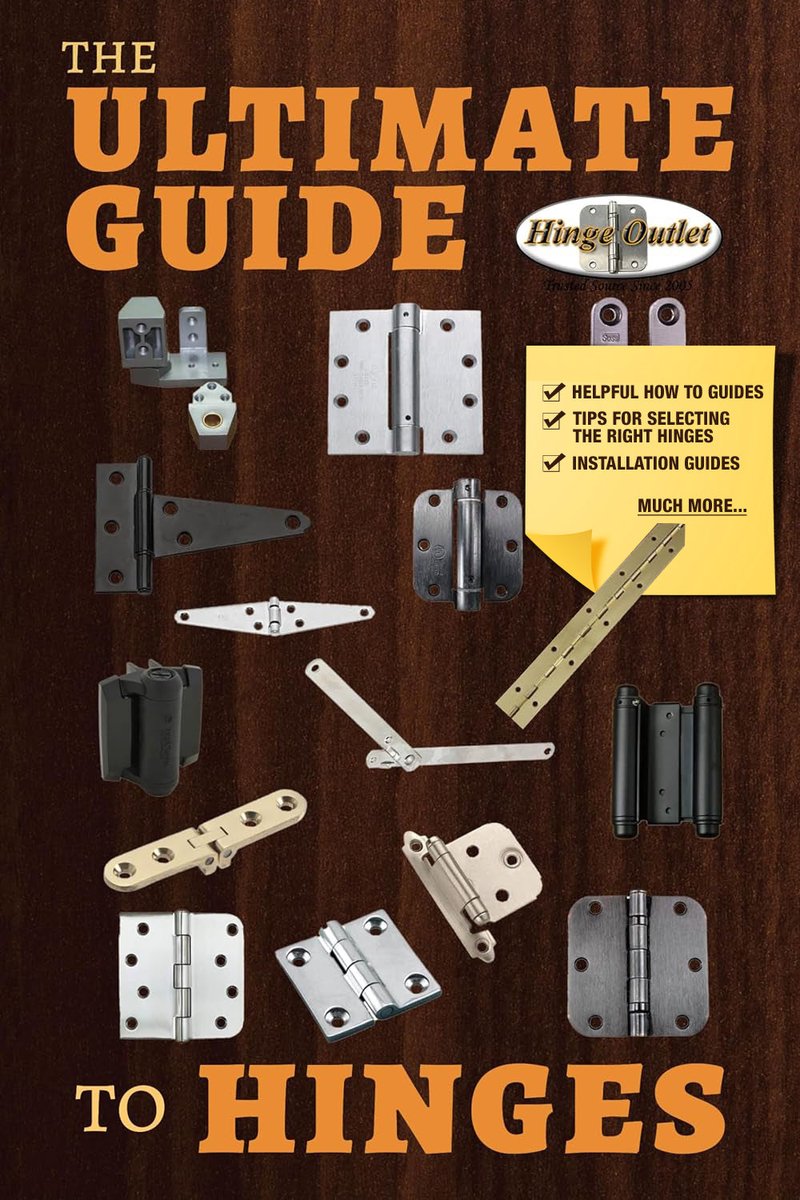
Here’s the thing: keeping exterior door hinges working smoothly in windy spots isn’t only about saving your ears from screechy noises. It’s about protecting your door from damage, saving time on repairs, and making your house feel safe when the weather acts up. Just like you wouldn’t drive your car without oil, you shouldn’t leave your door hinges dry and squeaky—especially if your neighborhood gets its fair share of gusts.
Let me walk you through everything you need to know about lubricating an exterior door hinge in a high-wind area. Whether your home swings on a classic Schlage front door, a modern Kwikset, or something a little less mainstream, the steps and logic are basically the same. We’ll cover why it matters, what to use, and how to do it right—so your door keeps swinging easily, no matter what the forecast throws at you.
Why Lubrication Matters More in High-Wind Areas
If you’ve ever heard your front door rattle or slam in a storm, you know those hinges aren’t just for show. Wind puts extra stress on exterior door hinges by pushing, pulling, and sometimes violently shaking the door. Over time, this constant movement wears away the protective layer of lubricant most hinges come with from the factory.
Without enough lubrication, the hinge pin and plates start scraping against each other every time the wind moves the door. This friction does two things: first, it makes your door creak, pop, or grind—annoying, sure, but not the end of the world. Second, and more importantly, it can cause the hinge to wear out faster. In a high-wind area, that wear happens way more quickly than you’d see elsewhere.
Just imagine your door as a gate at the edge of a farm field. The more wind, the faster those iron hinges rust and seize up—unless they get regular attention. Keeping hinges lubricated in a wind-prone place is like sunscreen for your front door. It’s a small thing that saves you a ton of hassle later, helping you avoid bigger issues like sagging doors, broken screws, or even a door that won’t close properly.
Choosing the Right Lubricant for Exterior Door Hinges
You might be wondering: can’t you just grab whatever oil or spray is sitting in the garage? Honestly, some lubricants work better for exterior hinges—especially where wind and weather are part of the picture. Let me break it down.
- Silicone Spray Lubricant: This is a top choice. It’s water-resistant, so it won’t wash away with rain or humidity, and it resists attracting dust and grime. Brands like WD-40 Specialist or 3-IN-ONE Lock Dry Lube are made for outdoor use.
- White Lithium Grease: For extra-long-lasting protection, this paste-like grease clings to metal and stands up well to friction. It’s messy, but it’s fantastic for high-stress hinges in windy, salty, or rainy climates.
- Graphite Powder: While graphite is great for locks and some interior hinges, it’s not usually the best fit for exterior door hinges. It can get washed away or clump if moisture gets in.
- Motor Oil or Household Oil: These options work in a pinch, but they’re not ideal for outdoor hinges. They tend to collect dirt and can wash off in bad weather.
Here’s the takeaway: Choose a lubricant that is weatherproof and meant for metal-to-metal contact. If you’re dealing with a branded exterior door, check the manufacturer’s recommendations—sometimes using the wrong product can even void a warranty.
Tools and Supplies: What You’ll Need
Prepping ahead makes this job way easier, especially if you’re trying to beat a storm or avoid a chilly breeze. Here’s what you’ll need:
- Weather-resistant lubricant (spray or grease, as described above)
- Phillips or flathead screwdriver (to remove the hinge pin, if needed)
- Rag or paper towels (for cleaning and catching drips)
- Old toothbrush or small wire brush (to clean built-up dirt from hinges)
- Latex gloves (optional, but it keeps things less messy)
- Step stool or ladder (if your door’s especially tall)
Most of these items are probably already in your toolbox or cleaning closet. If you’re short on anything, your local hardware store or big box retailer will have what you need.
Preparing the Door and Hinge for Lubrication
Before you go spraying or greasing anything, you’ll want to prep your hinge for best results. Think of this like wiping down a bike chain before you add oil—clean metal means better coverage and less gunk.
First, open the door wide enough to expose the hinges. If the door’s been sticking or squeaking, you might even hear a little pop as you do. Use that rag or paper towel to wipe away any obvious dust, cobwebs, or old crusty lubricant. If there’s lots of buildup, a small brush comes in handy—it helps get grime out of the cracks.
If your door has taken a real beating from wind and weather, check the hinge screws. Sometimes, high winds wiggle screws loose. Tighten any that feel loose, but don’t overtighten—you don’t want to strip the wood or damage the door frame.
Before getting started, take a quick look at the hinge. Severe rust or broken parts mean it’s probably time to replace the hinge, not just lubricate it.
How to Apply Lubricant to an Exterior Door Hinge
Here’s where things get hands-on. Applying lubricant is quick, but there’s a right way and a wrong way to do it—especially when you’re battling wind, rain, and dirt.
Step-by-step guide:
- 1. Remove the hinge pin (optional but more thorough)—Use a screwdriver and gently tap the pin up from the bottom. For many newer doors, especially ones from brands like Schlage or Kwikset, you might be able to skip this, but removing the pin gives you the deepest clean.
- 2. Clean the pin and hinge interior—Wipe down the pin and spray or brush out the hinge barrel. Removing old dirt and rust helps new lubricant work better and last longer.
- 3. Apply lubricant—With the pin out, spray or brush lubricant inside the hinge barrel and along the pin. If you’re using a grease, smear a pea-sized amount onto the pin before sliding it back in.
- 4. Reinsert the pin and move the door—Tap the pin back into place. Open and close the door several times to work the lubricant through all the moving parts.
- 5. Wipe away excess—Use a clean rag to catch any drips. This prevents dirt from sticking and keeps your door frame looking neat.
You might be tempted to skip pin removal, but honestly, going that extra step means your hinge gets full coverage—important for doors that face constant wind and moisture.
Extra Steps for High-Wind and Bad-Weather Conditions
Lubricating hinges in a high-wind area is a little different than doing the job on a quiet, sheltered porch. Wind-driven rain can wash away ordinary lubricants faster, and airborne grit can sneak in and grind down your hinge’s moving parts.
Here are some extras you can do if your house is in the line of fire:
- Go heavier on lubricant during storm seasons, but don’t overdo it—too much can actually trap dirt and gum things up.
- Check hinges more often. Every 3–4 months, give your door a test swing and listen for squeaks. If your area is especially wild in the winter, check again after big storms.
- Look for rubber or silicone hinge covers. Some hardware stores sell covers or shields that add a little protection from direct rain and dust.
- Consider switch plates or reinforcements if the door keeps working its way out of alignment in high winds—sometimes the hinge screws aren’t enough on their own, and you might need a pro to help.
When it comes to regular maintenance, a little attention goes a long way. In wind-prone places, “set it and forget it” just isn’t going to cut it.
Common Problems and Troubleshooting After Lubrication
Even after a good clean and lube, sometimes a door can still act up—especially if the wind’s been hard on it or if there’s some deeper issue at play. Here are a few troubleshooting tips to keep in mind:
- If your door still squeaks or groans after lubrication, double-check that you cleaned out old grime. You may need a second pass or a different lubricant.
- If you notice the door is sagging or rubbing at the latch or bottom, that usually means the screws or the hinge itself are loose, bent, or stripped. Lubricant alone won’t fix alignment issues—you’ll need to tighten or replace hardware.
- If the hinge keeps getting rusty, check for leaks or gaps where rain sneaks in. Sometimes, adding a drip edge or small awning above your door helps keep things drier.
- If the pin won’t come out or goes back in crooked, don’t force it—use a little more lubricant and gentle taps. For stuck pins, brands like Schlage and Kwikset often have how-to guides or even special tools designed for their hinges.
Sometimes, the wind finds every weak spot. If you keep having problems, it might be time to look at heavier-duty hinges, or talking to a pro about possible wind-proof upgrades for your door system.
Comparing Alternative Solutions: When Lubrication Isn’t Enough
Let me explain: sometimes, no matter how well you lubricate your exterior door hinge, the wind is just too much. Maybe you’ve got a particularly heavy solid-core door, or the spot you live in gets battered by storms every other week. In those cases, a simple tune-up isn’t always enough.
- Upgrade to Heavy-Duty Hinges: Many brands offer wind-rated or storm-proof hinges made of stainless steel or brass. These stand up better to constant motion and salt air.
- Install a Door Closer: This gadget gently pulls your door shut after opening, reducing slams and hinge stress—great for families where the wind likes to “help” the door along.
- Add Weatherstripping or Wind Blocks: If drafts are sneaking past your hinges, weatherstripping along the frame can reduce movement and protect the hinge area from rain and dust.
- Consider Storm Doors: Especially in the windiest places, an extra door in front of your main one acts as a first barrier, taking the brunt of the wind and rain.
Lubrication is a must, but sometimes, it’s just the first line of defense. Think of it as tuning a guitar string—you can keep it tight, but sometimes you need a stronger string altogether.
Keeping Your Exterior Door Hinges Smooth Year-Round
Here’s the bottom line: keeping exterior door hinges smooth in a high-wind area is part prevention, part routine. Even if you’ve only dealt with the wind for a few seasons, you know those little metal parts can turn into the weak link if you ignore them.
Set a simple reminder on your phone, or make a habit of checking your hinges whenever you clean up after a storm. Use the right weather-resistant lubricant, pay attention to how your door feels and sounds, and don’t be afraid to upgrade your hardware if the wind keeps winning the battle. These little steps make your home feel safer, quieter, and easier to live in—no matter what’s happening outside. And honestly, there’s nothing better than a door that just works when the weather wants to throw a tantrum.
